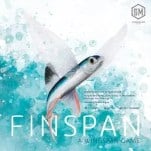Stamp Swap Is About as Fun as Collecting Stamps

“I cut, you choose” isn’t quite as grisly as it sounds: It’s a game mechanic where one player divides something they have—cards, tiles, goods—into two sets, however they want, and an opponent gets to pick one to take. Figuring out how to split your items into piles so that you can coax someone else into taking one of them, leaving you with the stuff you really want, becomes a huge part of the strategy. It’s a big part of Hanamikoji, one of my favorite two-player games, as well as some other very highly-regarded games like It’s a Wonderful Kingdom, The Great Split, and The Castles of Mad King Ludwig.
Stamp Swap, a new game from the designer of Honey Buzz and Genotype, is also built around this mechanic, where the goods are stamps of varying values, colors, themes, and sizes. You’re a philatelist at a three-day convention, trying to create the most valuable stamp collection over the course of three rounds, and you and your opponents will draft and then swap stamp tiles and attendee cards in each round to build out those collections.
Each game of Stamp Swap starts with five random objective cards across different categories—color, theme, shape, cancellation status, and ‘finale’ cards for the final scoring. In each round, you’ll draw cards from the event deck to determine what stamps and attendee cards to add to the pool, with some stamps face-down and others face-up, and then go around the table to draft them until each player has six items. (There’s an exception around the first-player token, which, if unclaimed, goes to the last drafting player, who then has a seventh item.) Each player reserves one of their six items, as long as it’s not a valuable ‘rare’ stamp, and then divides their remaining five into two piles, doing so in any way they wish. Players then go around the table, starting with whoever has the first player token at this point, selecting one pile from any opposing player and taking it for themselves. Once you’ve lost a pile in this way, you keep your second one—you can’t lose both. In a three- or four-player game, it’s possible for one player to end up keeping both of their own piles.

-

-

-

-

-

-

-

-

-

-

-

-

-

-

-

-

-

-

-

-

-

-

-

-
























